 |
Matronics Email Lists
Web Forum Interface to the Matronics Email Lists
|
| View previous topic :: View next topic |
| Author |
Message |
Area-51
Joined: 03 May 2021
Posts: 372
|
 Posted: Thu Aug 10, 2023 3:32 pm Post subject: The Obsidian Files - Wing Tips Posted: Thu Aug 10, 2023 3:32 pm Post subject: The Obsidian Files - Wing Tips |
 |
|
Wing tips. The bits on the end of the wing. The tips that arguably are hotly contested at all points of pilots meeting and talking about aeroplanes. The bits that cannot be improved upon. The bits that cause drag. The bits that attempt to stop the air under the wing meeting the air at the top of the wing. The bits that look awesomely cool and go faster. The bits that without the aircraft would still fly fairly well. The bits that get researched by every aerospace grad student in an effort to discover something that has never been discovered before. The bits that get smashed off as the aircraft gets rolled back into the hanger. The bits that are swappable depending on prevailing conditions. Some are painted. Some are plastic. Some are metal. Some are left off all together. I am left convinced without a doubt that humans that fly aeroplanes are fixated upon wingtips just as a dog is fixated upon the hubcaps of a car that drives past. That would make me just as insane as well.
So now that the pre-amble is dealt with sufficiently we can focus upon what was achieved and how it was achieved.
33 different variations of wing tips were modelled up and each attached onto our trusted test pig of a clean unadorned Europa Classic plug, one at a time, and fed into the digital wind tunnel to compare and contrast the results. Some discoveries were made and some expectations were surprisingly successful and others unexpected. It was a fairly involved process that took a fair amount of time to work through.
At this point it’s important to remember that these tests are not finite or matched exactly to the real world. They are comparative and trend specific only, and can only be used as indicative due to each aircraft being individually built by hand and therefore the performance of each finished aircraft can differ immensely.
Each model received exposure to exactly the same environment variables. So the only alternation across the entire study has been the wing tip; there has been no other variable applied.
Our fluid Air environment was set to standard baseline Zero AMSL values. The AoA of the aircraft was set to Zero degrees; so the Alpha (AoA of the wing to the Free Stream Air) will equal the Europa’s Wing Incidence. Our Velocity was set to 51ms (100kt).
On each Solution Run of 100 iterations only two basic criteria were recorded Force X (Drag), and Force Z (Lift). Because the study was comparative all that was required was to know how ‘x’ wing tip affected the numbers taken from our baseline model developed upon Europa 181’s airframe. Results are presented as ‘x,z’ format and are in Nm.
The Mesh resolution of each Solution was set to high.
Additional criteria reviewed upon completion of each solution were focused upon wing tip vortex diameter; were they significantly larger or smaller than provided by the baseline model.
This is the part in the youtube video that I say “So let’s get into it” in a really super excited fake way and point my finger at the camera lens.
First off the block is our trusty Pig, sorry Pug, zero alterations, and not surprisingly it spat out:
606 / 3569
At this point I am going to supplement the results just recently received on the wing tips modelled off VH-CUA, as they are of a more rounded form than those on 181 and were:
CUA - 563 / 3747
Back to solution runs, a bit unconventional and worth a review all the same:
A - 627 / 4218
Could not work out why the drag results were so high; however the tip vortex factor was reduced to zero! please be suggesting something:
B - 2322 / 3250
Everybody want’s to look cool, Winglets:
C - 568 / 3911
Still looking cool, looking cool, very cool etc, tweaking things and seeing the results…
D – 593 / 3941
E – 572 / 3995
F – 582 / 4109
G – 583 / 4153
H – 583 / 4152
I – 603 / 3952
J – 577 / 4130
K – 592 / 4345
L – 585 / 4078
M – 594 / 4153
Things started to get boring, so just for the sake of it elliptical tips were modelled up. The version numbers of the different elliptical tips relate to the distance in (mm) from the outer extremity of the wing span toward the wing root where the ellipse begins. So the lower the number the closer to the tip the ellipse begins. The formatting of the ellipse is fairly rudimentary and is based around the Supermarine Spitfire ratio. Versions designated ‘T” relate to the distance in (mm) added to the standard Europa wingspan of the 2950 Ellipse.
EL50 – 559 / 3865
EL100 – 547 / 3833
EL150 – 542 / 3864
EL250 – 531 / 3839
EL350 – 527 / 3793
EL500 – 523 / 3716
EL750 – 529 / 3690
EL1000 – 515 / 3646
EL1250 – 530 / 3533
EL1500 – 528 / 3425
EL2000 – 505 / 3394
EL2500 – 495 / 3359
EL2950 – 500 / 3249
T250 – 517 / 3410
T350 – 515 / 3669
T550 – 532 / 3927
T660 – 529 / 4170
What about chamfered wing tips, like those on a Sonex?
C01 – 572 / 3973
So what information can we garnish from the results of all the solution runs?
Like everything else that humans mostly do there needs to be an incentive. And as long as there is the provision of quality and care there is no better incentive than a free lunch!
Firstly I need to confess that test B was not a serious concept, but I was expecting Darth Vader to turn up at any moment afterward to take his ship and fly away with expedience.
Back to the free lunch; what do we want to see from these results? We want to see less Drag and more Lift; because we fly Europas not Drifters.
606 / 3569 is our baseline, so anything better than that is a winner; or is it?
Looking at the Elliptical numbers we see that as the ellipse is extended the Lift and Drag trend diminishes. However with the Winglet style tips we see a decrease in Drag and increase in Lift trending. For example, Winglet K is signalling 68kg’s of additional Lift and 1kg less Drag. That’s nothing to scoff at when it’s placed on the table, and this appeared to be where the winglets were maxing out. Fine tuning and tweaking could not really achieve any better results. Winglet A2 was progressively trimmed back to a fairly small tip similar to a Jabiru and did not really alter the results greatly. So regarding wing tip vortex reduction the vertical height and rearward sweep of the winglet appears to not be such a factor. Did the Winglets reduce the size of the tip vortex, yes they did by about 30% on average; but not as much as the Elliptical tips did.
The Elliptical tips are in short simply amazing at their ability to reduce tip vortex size by some 90% to almost nothing. Regardless of the version tested they all displayed the ability to dramatically reduce the diameter of the tip vortex; even the 50mm Elliptical tip provided a dramatic advantage over the standard style wing tip found on 181. If we look at the 150mm or 250mm Elliptical tip we can see the similarity with those found on an old Biplane or Aviat Pitts; handy to know, and let’s come back to that.
Regarding the rounded tips on VH-CUA v’s the flatter version found on 181. Well CUA is delivering an easy to prepare canapé that anybody can probably achieve without too much fuss.
The Chamfered wing tip results were surprising and not expected to be that great. But after looking at the numbers it was plain to see why this simple yet affective style of tip is so widely used; its simple, and its affective. The Chamfered tip returned 40kg of free lunch and 3.4kg of less alcohol to slow things down. But where it looses out is at higher angles of attack. Although the size of tip vortex was close to the elliptical tip in the 0deg attitude, things change as higher angles of attack are assumed with tip vortex sizes increasing. However the Elliptical style of wingtip does not suffer this, as AoA is increased the tip vortex size remains quite small.
Another aspect observed of the Elliptical style tip was the extended working area of the wing span. Where as the standard 181 style tip sees maybe 85% of the wingspan actively generating Lift, the Elliptical style tip sees almost 100% of the wing span generating Lift. However this ability to generate more Lift balances out again as there is less comparative surface area for the same chord and span sizing. So as we extend the ellipse inward toward the wing root the amount of Lift generated diminishes due to a smaller overall surface area.
Additionally Elliptical style wing tips appear to maintain laminar airflow over the aileron section of the wing at high angles of attack along with very small tip vortex sizes, with the stall characteristics trending to an overall higher AoA ability of the wing to remain flying which in itself assists STOL capabilities.
Feeding all the results into a simple algorithm of (z/x) versions K, E250, E350, T350, T550, T660 stand out as decent performers, all bouncing over the 7.15 mark with T660 on top at 7.88 by cutting Drag down some 7kg while increasing Lift by 61kg. However E250 and E350 at 7.22, 7.19 respectfully probably win due to their more conservative gains of let’s say 7kg reduction in Drag and 28kg increase in Lift while the wingspan remains unchanged.
So at the end of it all E250 and E350 appear to be an achievable style of tip and similar to those found on old biplanes and the Aviat Pitts and based upon comparative results a very efficient form of wing tip perhaps? Either way it would appear that Elliptical style wing tips cannot be beaten when it comes to overall aerodynamic performance and efficiency.
| | - The Matronics Europa-List Email Forum - | | | Use the List Feature Navigator to browse the many List utilities available such as the Email Subscriptions page, Archive Search & Download, 7-Day Browse, Chat, FAQ, Photoshare, and much more:
http://www.matronics.com/Navigator?Europa-List |
|
| Description: |
| 181 - Flat Ended Wing Tip |
|
| Filesize: |
85.55 KB |
| Viewed: |
2046 Time(s) |
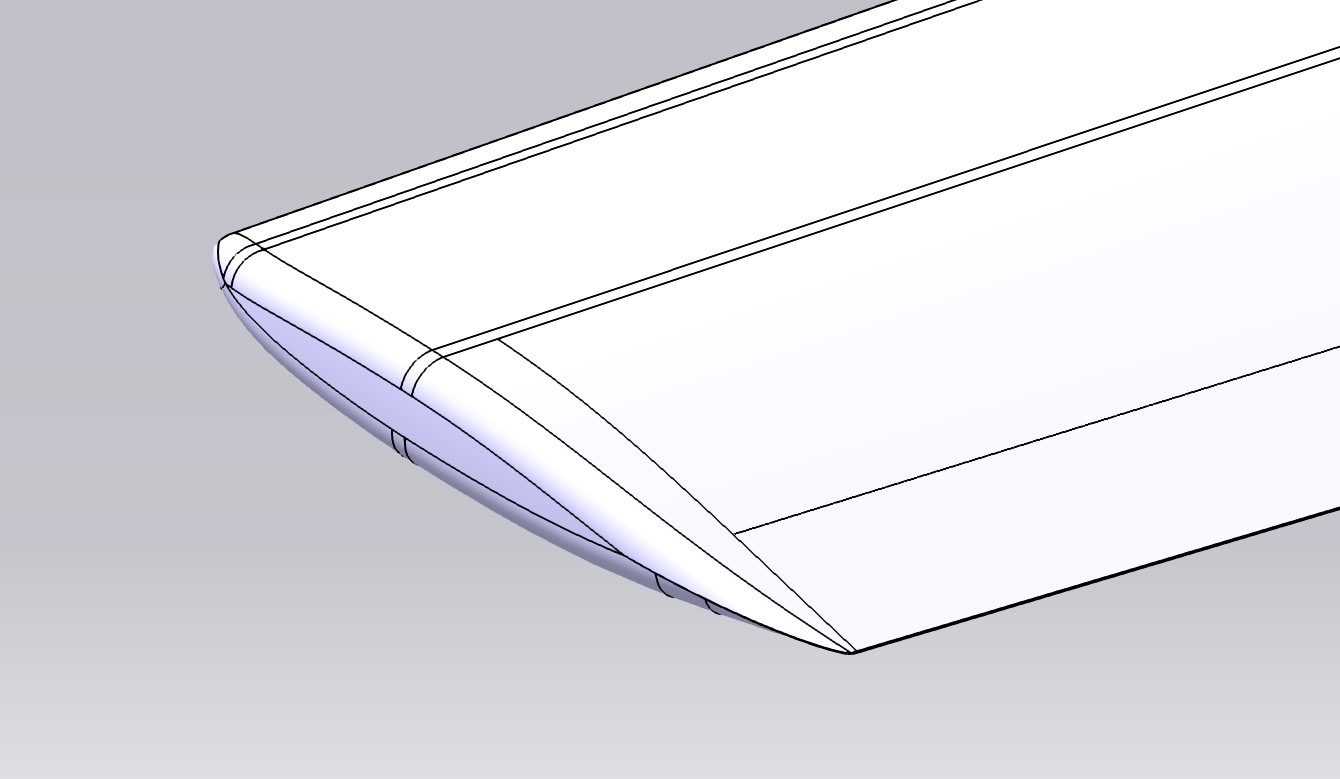
|
| Description: |
|
| Filesize: |
47.7 KB |
| Viewed: |
2046 Time(s) |
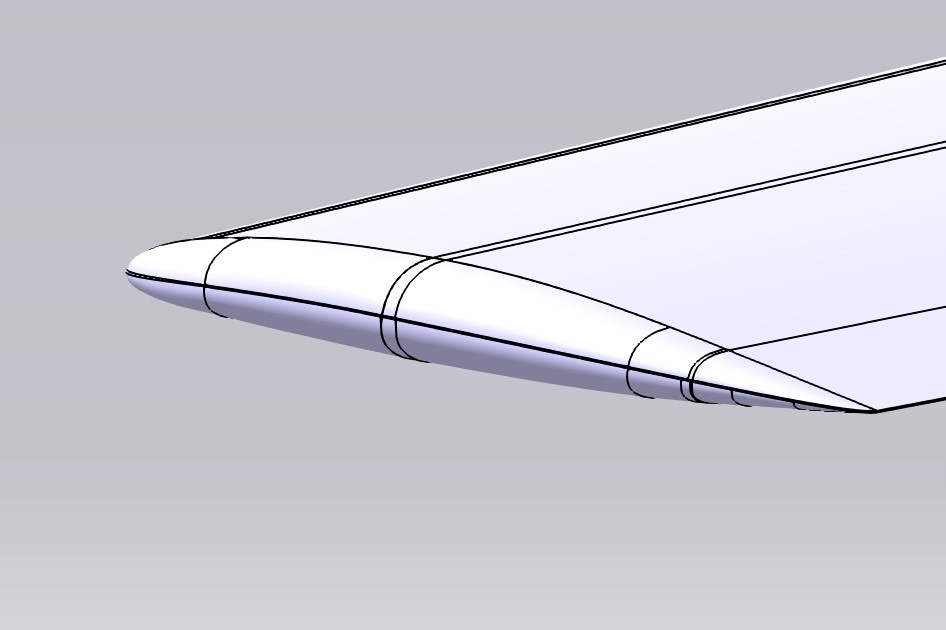
|
| Description: |
|
| Filesize: |
124.27 KB |
| Viewed: |
2046 Time(s) |
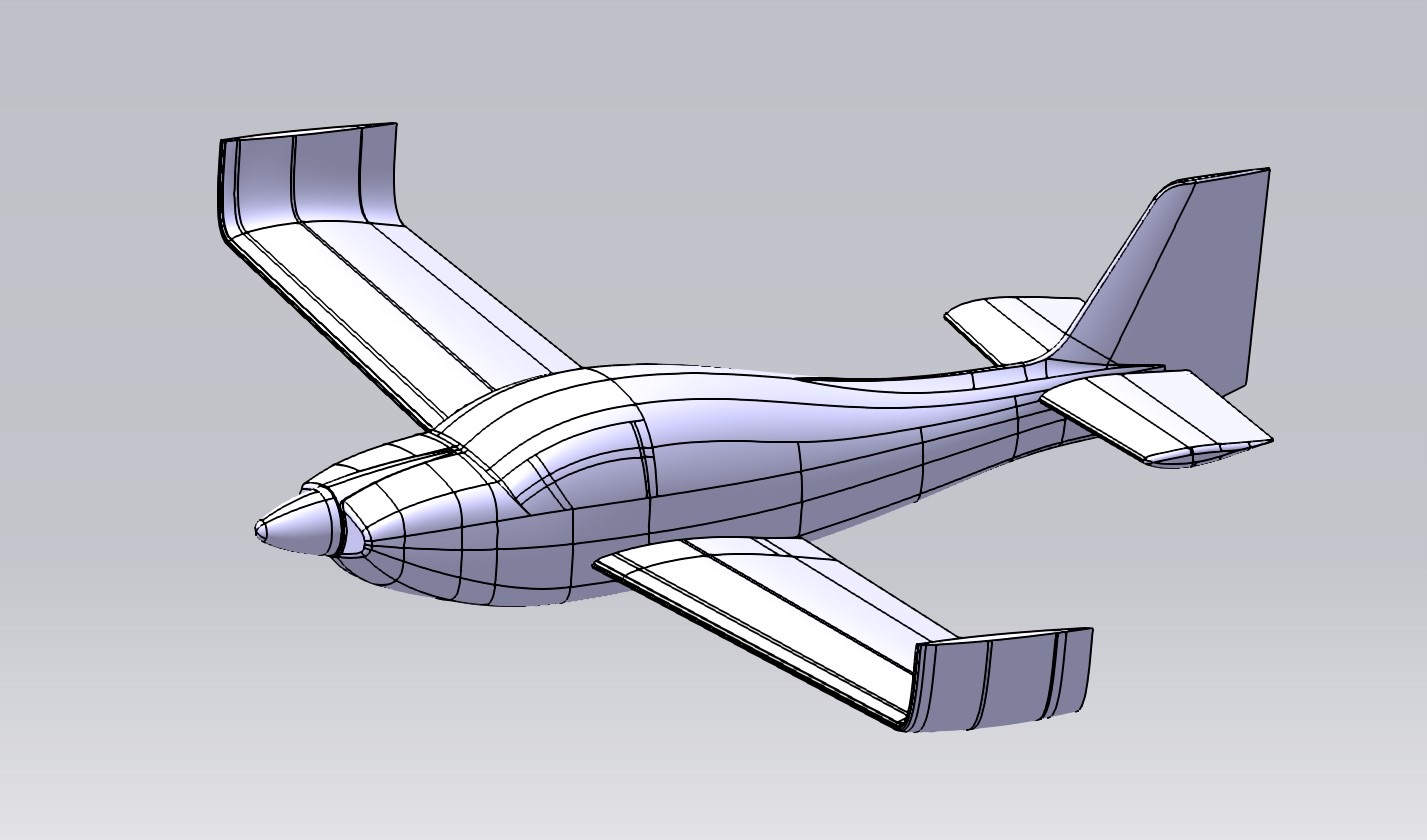
|
| Description: |
| B - Version Winglet- Come over to the dark side young Skywalker |
|
| Filesize: |
62.89 KB |
| Viewed: |
2046 Time(s) |
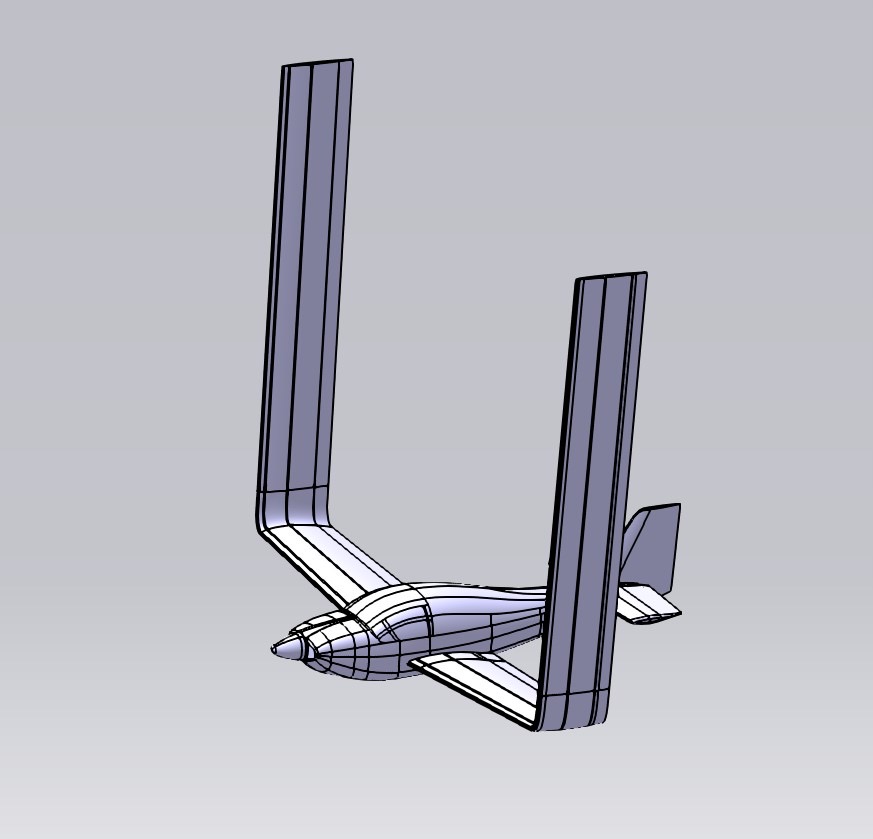
|
| Description: |
|
| Filesize: |
143.29 KB |
| Viewed: |
2046 Time(s) |
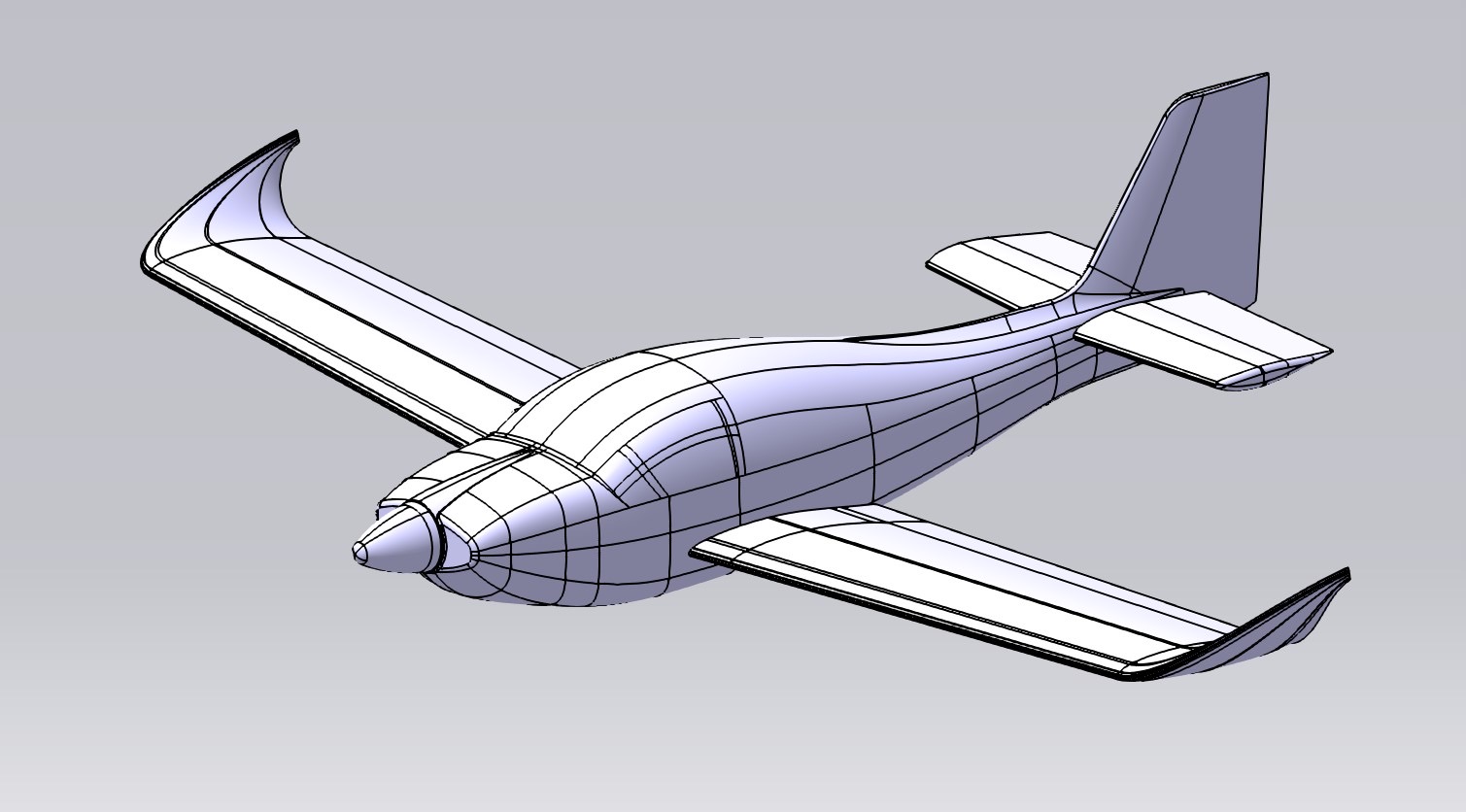
|
| Description: |
|
| Filesize: |
146.61 KB |
| Viewed: |
2046 Time(s) |
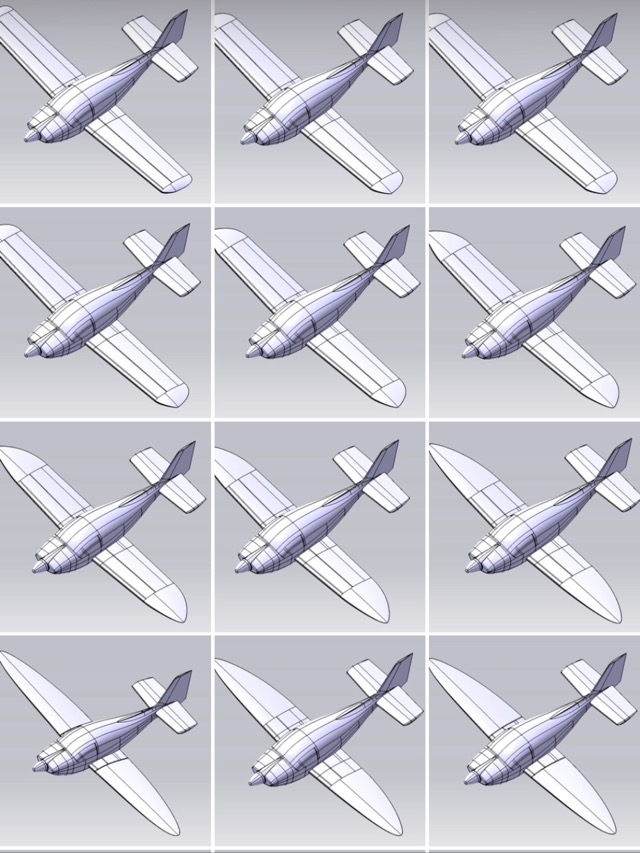
|
| Description: |
|
| Filesize: |
134.09 KB |
| Viewed: |
2046 Time(s) |
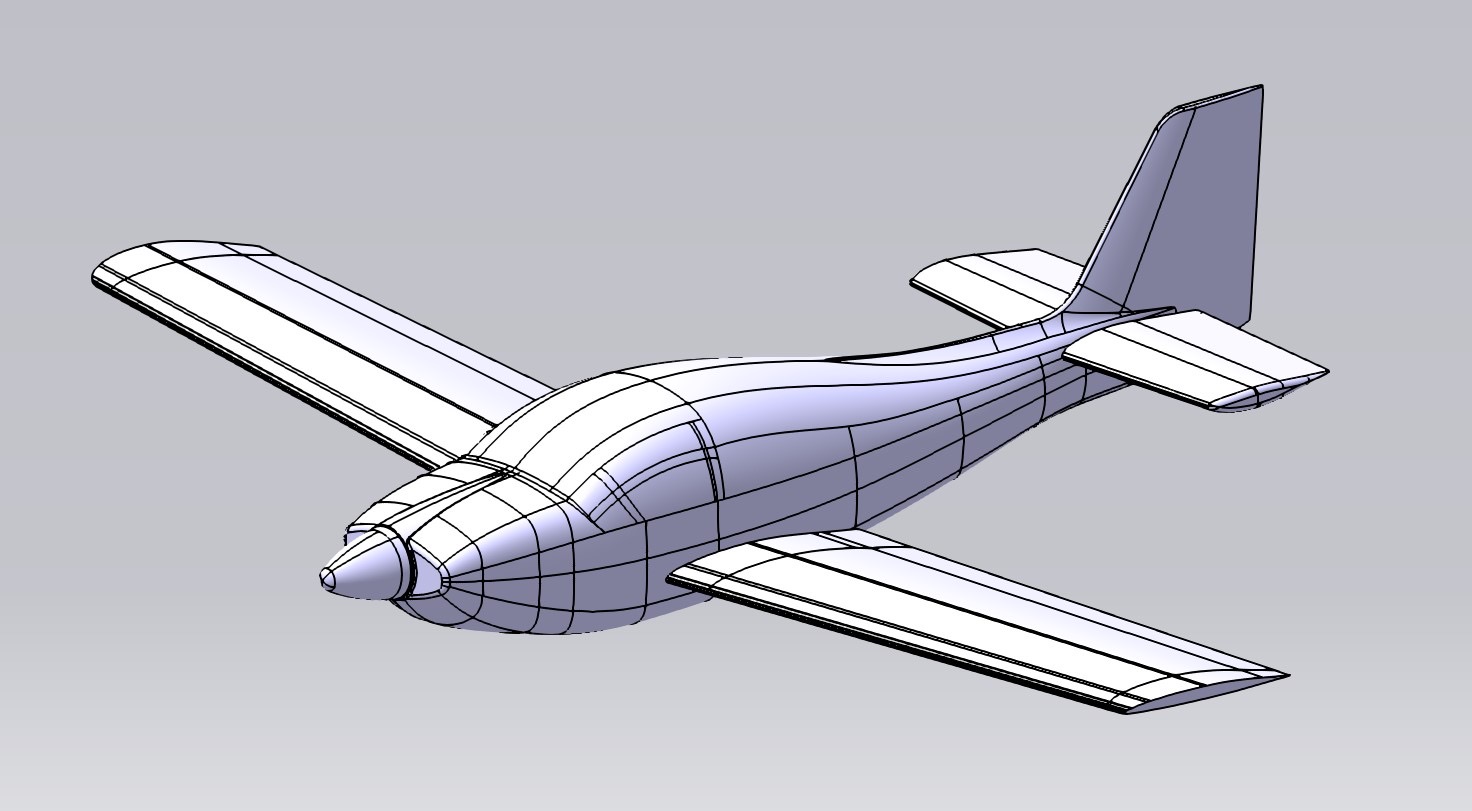
|
|
|
| Back to top |
|
 |
Area-51
Joined: 03 May 2021
Posts: 372
|
 Posted: Thu Aug 10, 2023 8:28 pm Post subject: Re: The Obsidian Files - Wing Tips Posted: Thu Aug 10, 2023 8:28 pm Post subject: Re: The Obsidian Files - Wing Tips |
 |
|
Some additional supporting images showing employment of a similar version of the EL500 style wing tip on a Bushcat STOL aircraft.
Again something similar also found on a Globe Swift. Notice the leading edge slots. This will be addressed in another chapter of the obsidian files.
And some velocity flow images of the EL150 and EL2000 style wing tips showing the extended span of Lift generating area further out toward the tip. The EL2000 version is unique in experiencing a small dead spot at about 75% span that the other versions do not suffer.
Another forward profile view of the EL150 wing tip. It is this thinning of the bead between top and bottom chord that reduces the size of tip vortex, and the oval form that maintains reduced vortex size through higher AoA's.
Finally EL2950 velocity flow images at 45kt TAS showing the outer extremities of the wing maintaining laminar flow during both high AoA alpha of 16deg and On Stall at AoA alpha 22deg.
| | - The Matronics Europa-List Email Forum - | | | Use the List Feature Navigator to browse the many List utilities available such as the Email Subscriptions page, Archive Search & Download, 7-Day Browse, Chat, FAQ, Photoshare, and much more:
http://www.matronics.com/Navigator?Europa-List |
|
| Description: |
| Bushcat STOL - EL500 style wing tip |
|
| Filesize: |
109.46 KB |
| Viewed: |
2025 Time(s) |
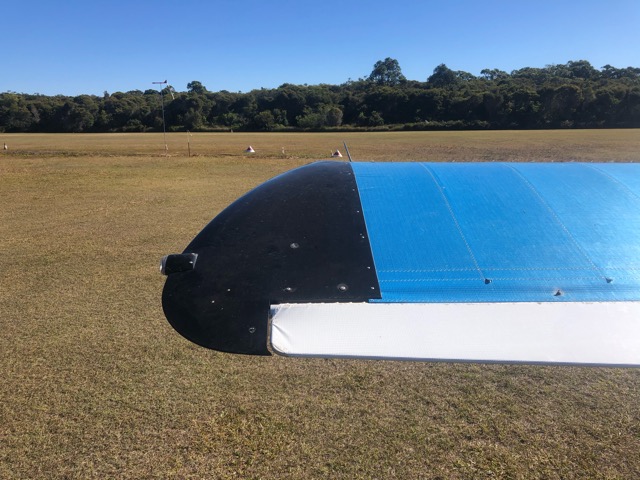
|
| Description: |
| Globe Swift - Elliptical wing tip with outer span leading edge slot |
|
| Filesize: |
59.89 KB |
| Viewed: |
2025 Time(s) |
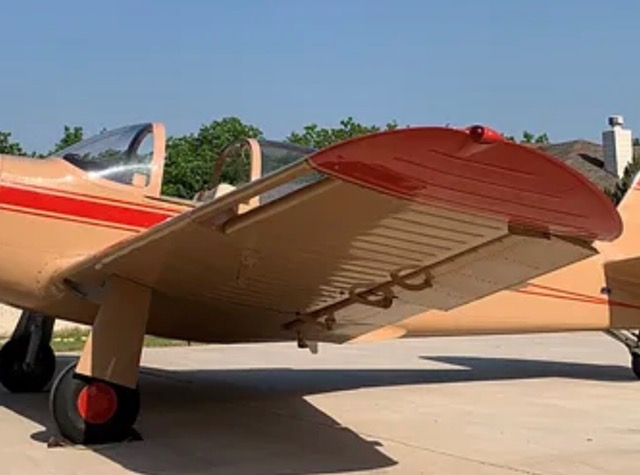
|
| Description: |
| EL2000 - the unique 75% dead zone of the wing's extended working span |
|
| Filesize: |
86.61 KB |
| Viewed: |
2025 Time(s) |
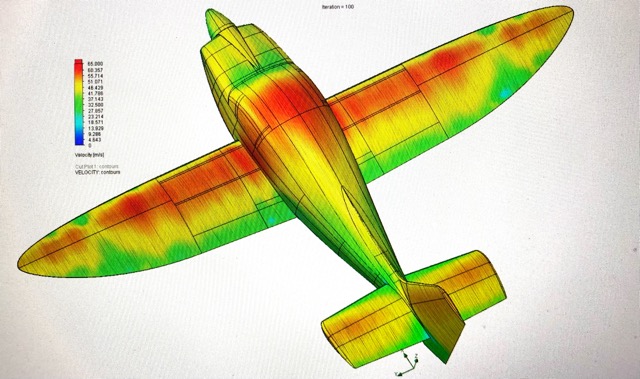
|
| Description: |
| EL150 - the extended working span of the elliptical style wing tip |
|
| Filesize: |
74.8 KB |
| Viewed: |
2025 Time(s) |
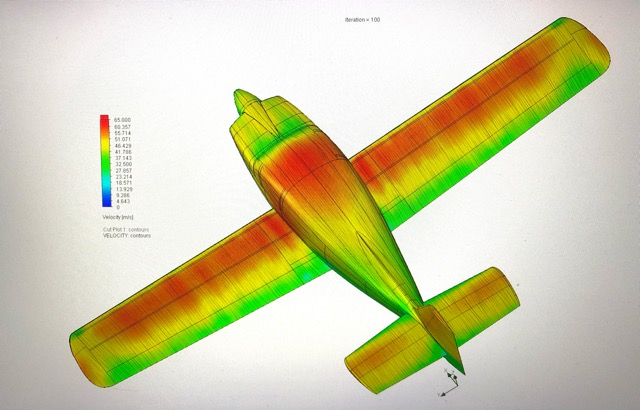
|
| Description: |
| EL150 forward profile - the thinning line where all the magic happens |
|
| Filesize: |
70.11 KB |
| Viewed: |
2025 Time(s) |
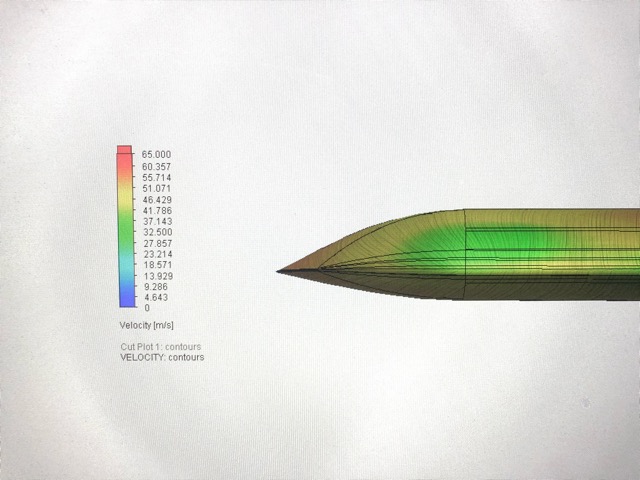
|
| Description: |
| EL2950 - At high AoA - the wing tips and ailerons maintaining authority |
|
| Filesize: |
61.6 KB |
| Viewed: |
2025 Time(s) |
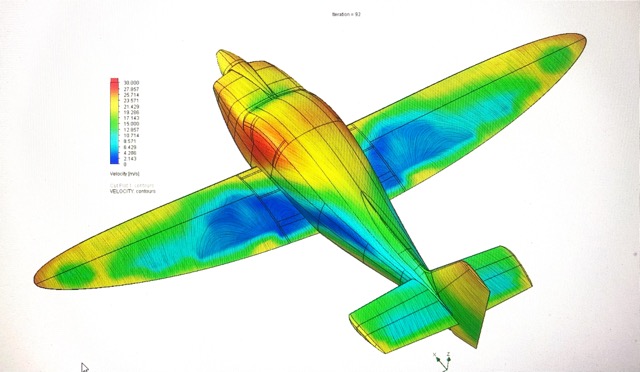
|
| Description: |
| EL2950 - On The Stall - the wash moving from the root out toward the tip which remains un-stalled |
|
| Filesize: |
71.56 KB |
| Viewed: |
2025 Time(s) |
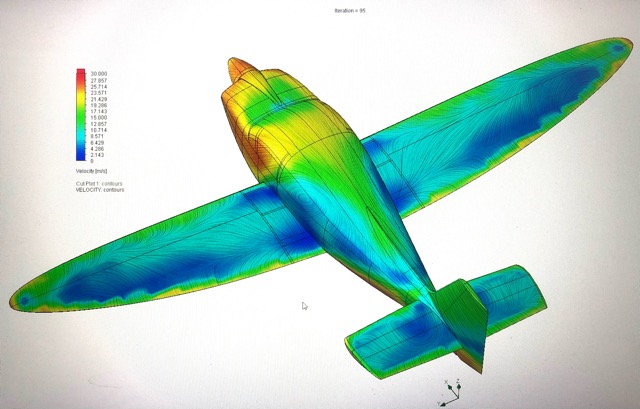
|
|
|
| Back to top |
|
 |
dmac7
Joined: 05 Apr 2019
Posts: 46
Location: Canada
|
 Posted: Fri Aug 11, 2023 6:36 am Post subject: Re: The Obsidian Files - Wing Tips Posted: Fri Aug 11, 2023 6:36 am Post subject: Re: The Obsidian Files - Wing Tips |
 |
|
Interesting what a computer can say about shape changes on a aircraft. The B model Piper Aztec offered optional 22 gal tip tanks of a different shape to the standard wingtip. It was said they were Hoerner wingtips.
With these Hoerner tips the Aztec would land a few hundred feet shorter and cruise 5 mph faster. Similar but not the same as your Chamfered tips.
The Aztec had a non tapered planform and thus was full cord at wingtip, this may have exaggerated the improvement. The comparison Aztec was a C model with standard round planform wingtips. Old memories.
| | - The Matronics Europa-List Email Forum - | | | Use the List Feature Navigator to browse the many List utilities available such as the Email Subscriptions page, Archive Search & Download, 7-Day Browse, Chat, FAQ, Photoshare, and much more:
http://www.matronics.com/Navigator?Europa-List |
|
|
|
| Back to top |
|
 |
Area-51
Joined: 03 May 2021
Posts: 372
|
 Posted: Sat Aug 12, 2023 2:30 am Post subject: Re: The Obsidian Files - Wing Tips Posted: Sat Aug 12, 2023 2:30 am Post subject: Re: The Obsidian Files - Wing Tips |
 |
|
Yes, it is truly amazing the amount of mathematics a computer can quickly deal with these days. The Hoerner style chamfer tips are great; very unexpected result.
Didn't even think to include tip tanks 😂😂 guess that would only apply to highly specialised long-haul versions of the Europa 🤷🏼♂️
🤔 how much fuel could a europa possibly support... 280 litre perhaps 😀, +%~ 🤓, 28-35 hours endurance... 2500-2800 miles 🤔.... 😀 fly around the world easy!!!
| | - The Matronics Europa-List Email Forum - | | | Use the List Feature Navigator to browse the many List utilities available such as the Email Subscriptions page, Archive Search & Download, 7-Day Browse, Chat, FAQ, Photoshare, and much more:
http://www.matronics.com/Navigator?Europa-List |
|
|
|
| Back to top |
|
 |
budyerly@msn.com
Joined: 05 Oct 2019
Posts: 282
Location: Florida USA
|
 Posted: Mon Aug 14, 2023 7:23 am Post subject: The Obsidian Files - Wing Tips Posted: Mon Aug 14, 2023 7:23 am Post subject: The Obsidian Files - Wing Tips |
 |
|
The wing theory hasn't changed much since the 1920s but the math is now easier just letting the "zeros and ones" computer to do the calculations.
We've known the elliptic wing distribution (which is the optimum induced drag profile) is easily achieved by building an elliptical wing profile (Spitfire, P-47, and others). But technically was costly in time and technique, (until composites of course).
For production the rectangular tapered wing was easier to build and just put in a bit of twist to achieve the elliptic lift distribution but unfortunately it was best suited to a specific wing loading. If cruise altitude, aircraft weight, or G forces changed, drag was affected.
One of my aero instructors was Professor Bondi, who was on the 727 wing aerodynamic team. Once the 727 was stretched, reengined and modified, the aircraft was flying higher, with a heavier wing loading. Hence the team had to find a fix but, had to do it without changing the base wing structure. It became a massive push for finding an aerodynamic gimmick that would break through the high altitude overloaded wing modifications. With the 747 and 737 coming online, the 727 was dropped by Boeing and the rest is history. The design teams found that they could make some improvements through wing tip design. Boeing wasn't happy with changing anything that required extra structural changes.
For non swept straight wings of constant chord three things stood out. Tip tanks of a roundish shape were OK and decreased higher angle of attack drag, but a swept up tip tank like the Cessna 310 worked a bit better, but so did an ugly flat plate (or fence), and a sloped up angled flat plate over 45 degrees was a benefit when fully loaded. These changes didn't help on the airliners as much as the lower slower aircraft. Increasing the flat plate upper height worked slightly better if installed vertically. Then Hoerner (in the late 40s) extended a straight constant chord wing and squared it (which also added wing area) giving it a slight under camber which improved heavier loading tolerance and decreased the drag due to lift but added parasite drag at the higher subsonic speeds. Hoerner's WWII experience indicated a slight decrease in the tip vortex and gave a 1-2% improvement in drag reduction. Especially on a straight wing like the Fieseler Storch which he was working on. However, as Professor Bondi pointed out, the Hoerner tip also increased wing area, so which was actually better? The extra wing area or the shape of the tip. Most aircraft manufacture's such as Piper and Cessna slightly changed their tips to a swept up design but a composites company out of Texas who I can't remember the name modified the tip further creating a downturn and a larger droop such as was done on to some aftermarket STCs on the Piper short wing and Hershy bar wing Cherokee aircraft.
Today with our greater computer capability, you have found that efficiencies can be found through adding these "aerodynamic gimmicks" to allow some fixes to overloaded or poor designs.
Just like any manufacturer, we builders are not excited about modifying our completed aircraft. But modifications can be tested if you are willing to carve some foam, glue onto the wing a mod and see how it works, then tear it off, sand, and repaint when done.
I prefer to go after the max drag producers. Cooling drag and fixed gear drag. Most techniques we need are in the NASA or NACA wind tunnel tests and follow on experiments done over the years. That makes the computer programs we have far more fun to just look at ways to fix those pesky draggy parts like cowl inlets/outlets and wheel pant/gear leg improvements. Granted, engine cooling is a very time consuming data issue but cooling exit ideas and movable flaps that can enhance climb and streamline cruise.
I'm one day am going to look at a plug in for the belly cowl exit incorporating a couple cowl flaps and perhaps a landing light that is retrofittable for the trigear. Wheel pants I took care of and made them improve mx and inspection and drag so I am sufficiently pleased enough to call them "Damned Adequate". Now to get some time this fall to work on my simple add on cowl exit.
Keep on plugging. You all are having great discussions, and although not immediately applicable are interesting.
Bud Yerly
--
| | - The Matronics Europa-List Email Forum - | | | Use the List Feature Navigator to browse the many List utilities available such as the Email Subscriptions page, Archive Search & Download, 7-Day Browse, Chat, FAQ, Photoshare, and much more:
http://www.matronics.com/Navigator?Europa-List |
|
|
|
| Back to top |
|
 |
|
|
You cannot post new topics in this forum
You cannot reply to topics in this forum
You cannot edit your posts in this forum
You cannot delete your posts in this forum
You cannot vote in polls in this forum
You cannot attach files in this forum
You can download files in this forum
|
Powered by phpBB © 2001, 2005 phpBB Group
|
















